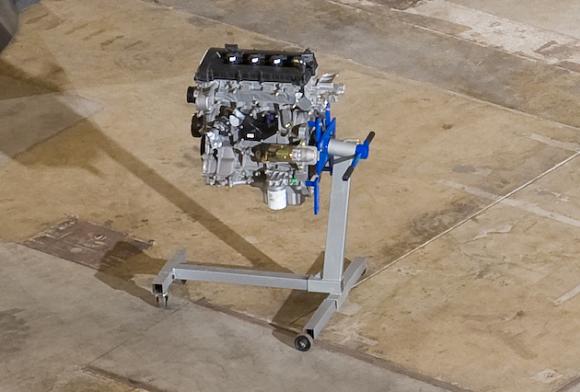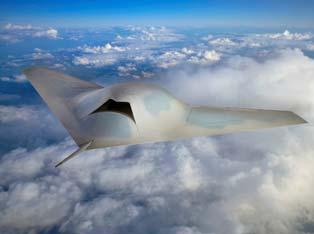Original URL: https://www.theregister.com/2010/03/10/phantomware/
'Phantom Eye' hydrogen strato-spy drone starts building
Cruises 12 miles up on pair of Ford car engines
Posted in Science, 10th March 2010 13:26 GMT
Global arms'n'aerospace behemoth Boeing says it will now begin work in earnest on its "Phantom Eye" high-altitude hydrogen spy drone, powered by a pair of modified Ford car engines.
The unmanned Phantom Eye will, according to Boeing engineers, be able to cruise for as long as four days at a time at altitudes of up to 65,000 feet.

They should call it the Ford bi-motor, not the Phantom Eye.
“The essence of Phantom Eye is its propulsion system,” says Darryl Davis, Boeing bigwig. “[It] will be ready to fly early next year.”
The propulsion system in question is a four-cylinder petrol engine from Ford, the same kind used in some Ford Fusion models, modified to run on hydrogen. The engine and its associated turbochargers and controls have now passed tests in a low-pressure altitude chamber on the ground, and Boeing's advanced-concepts Phantom Works* shop will now build it into an actual flying aircraft.
Boeing has no customer lined up for the Phantom Eye, but would naturally hope that various arms of the US government might like to buy it for "missions that could include intelligence, reconnaissance, surveillance and communication".
'Phantom'ware ... ghosts of dead projects from the past?
The mighty globocorp may find that it has had a march stolen on it here, however, as the rival Global Observer hydrogen strato-drone from California firm Aerovironment already has US government customers: a third Global Observer was ordered last year by a group of six different government agencies including the Special Operations Command.
Aerovironment also claim significantly better performance than the Phantom Eye, saying that the Observer can stay at 65,000 feet for "five to seven" days rather than just four. Like the Eye, the Observer uses an internal-combustion engine running on hydrogen, but it drives its props using a generator and electric motors.
The Eye would seem to be simply a twin engined version of the Phantom Works' previous Orion drone, which used a prop driven directly by the same kind of Ford engine which will fly in the Eye. Boeing say they will follow on with a bigger job that can stay up for ten days in due course: though a few years ago this was being promised for the Orion's successor.

No actual raygun on offer, though.
Meanwhile, the Phantom Works seems to have dusted off another old project that was sitting around without a buyer, namely the X-45C unmanned stealth combat jet, which failed to pique the interest of the US Air Force: though the X-47B robot carrier plane from rival Northrop Grumman is still proceeding for the US Navy.
Now in a crazy new camouflaged paintjob, the X-45C is being carried forward by Boeing using its own money under the name "Phantom Ray", perhaps hoping to prevent any future Pentagon business going to upstarts like General Atomics - who have lately brought out their new jet-powered "Avenger" robobird, building on the success of the Predator and Reaper drones.
Boeing's whizz-tech chiefs will no doubt be hoping that their newly-rebranded line of Phantomware does better in future than it has done so far. ®
Bootnote
*The firm seems lately to have adopted a policy of inserting the Phantom tag into many of the prototypes developed there: hence Phantom Eye, Phantom Ray etc.